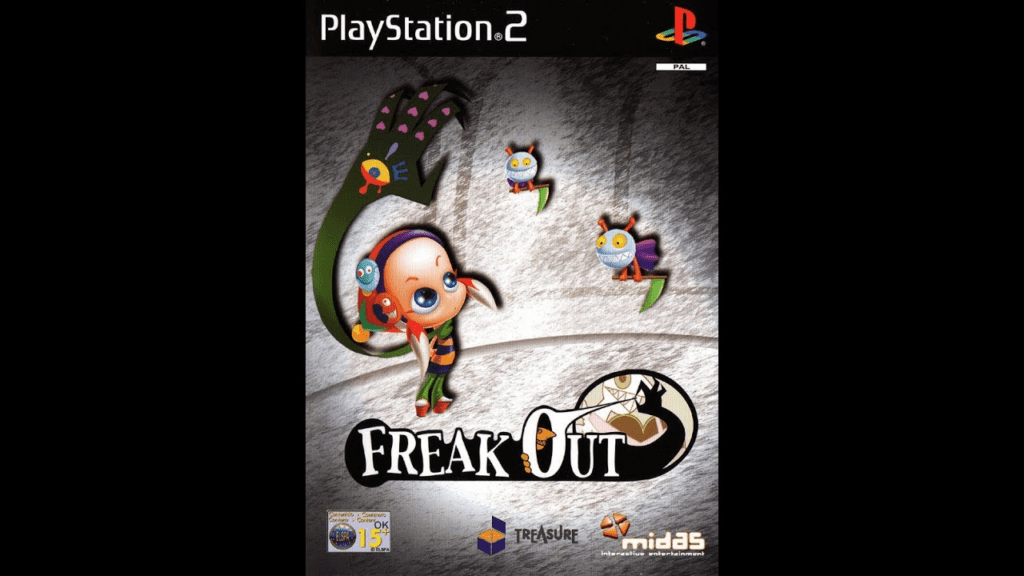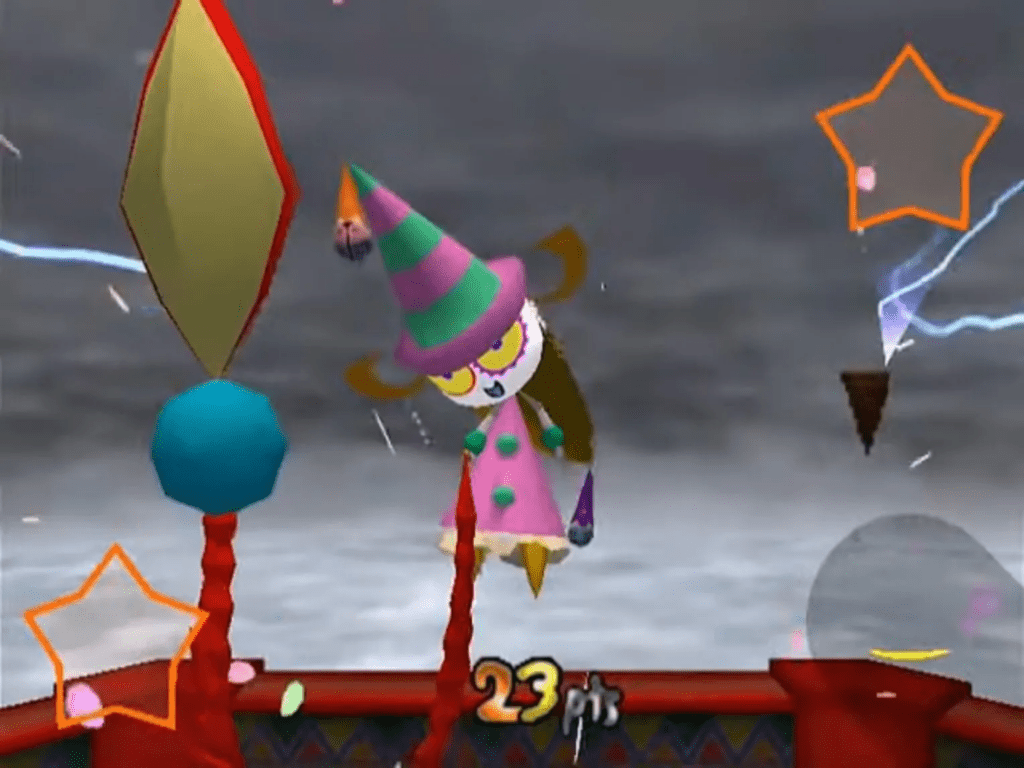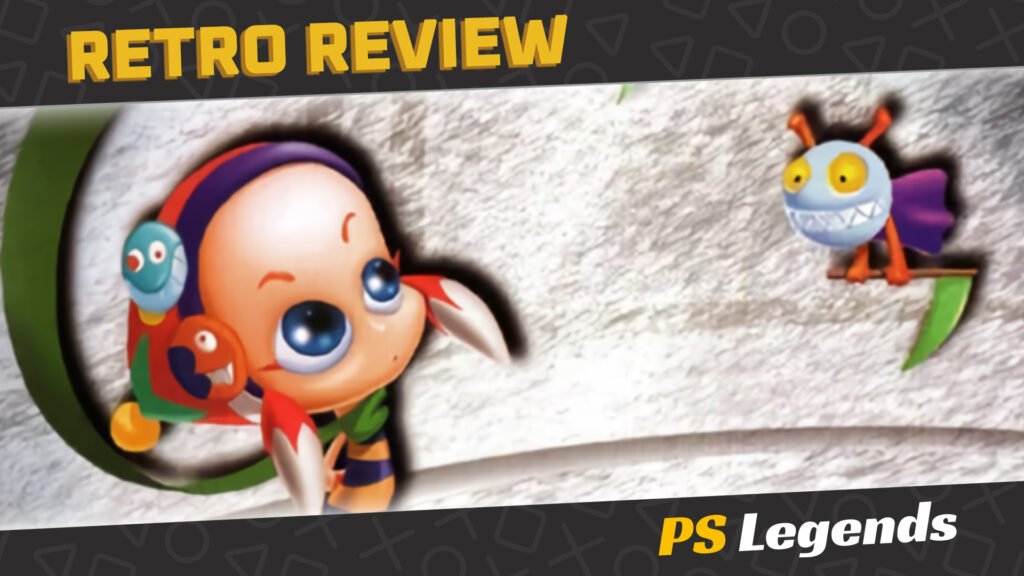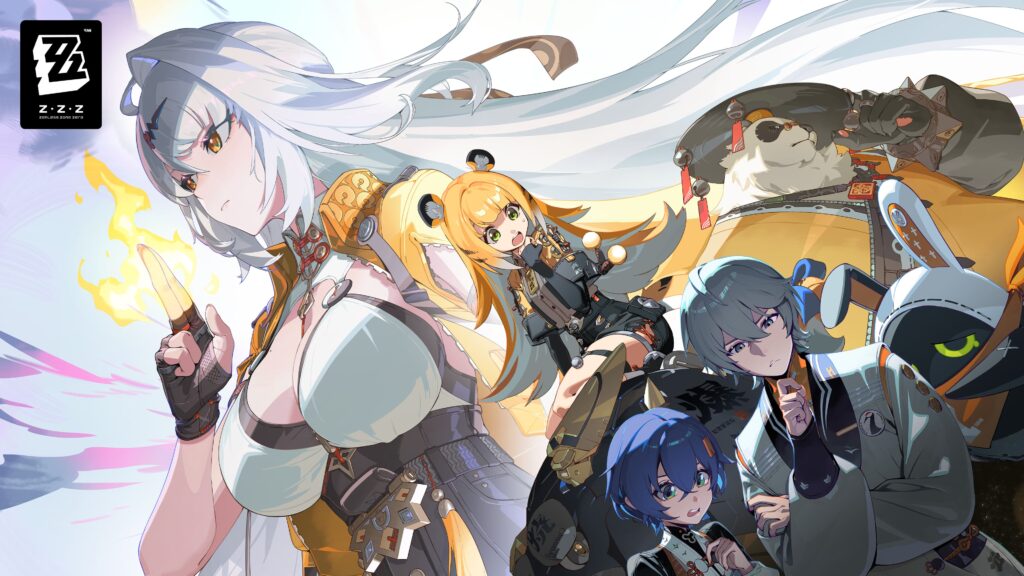Some games stay with you years after playing, not only because of their quality, but also because of their unique style. Today, we revisit a classic that should make the top ten list of one of PlayStation’s weirdest titles. It’s a game of many names, but for the purpose of this review we’ll stick with what we know. Welcome to the unapologetic madness of Freak Out.
On This Page
Introduction
Freak Out, also known as Stretch Panic in North America, and Hippa Linda in Japan, is a platform game designed by award-winning indie developer Treasure Co. Ltd. It was a landmark title for the developer as it was their first game to feature 3D graphics, with the studio famed for their earlier 2D titles.
The game revolves around a girl named Linda who has the power to pinch, stretch, and bend objects and enemies with a magic scarf as she battles her evil sisters. The game was released on July 27th, 2001 in Europe, August 28th, 2001 in North America and December 6th, 2001 in Japan.

Story
Linda is considered the runt of the litter in her family; the youngest and yet the most independent and levelheaded of thirteen sisters. With the exception of Linda, this well-to-do family has an unhealthy obsession with beauty, and treat the non-conformist young Linda as their errand girl, often making fun of her scarf, an old gift from her father which she treasures.
One day, a large, mysterious package appears on the family’s doorstep which, upon being opened, unleashes thirteen demons of vanity. As twelve of the demons manage to kidnap and possess the other sisters, the thirteenth demon becomes stuck in Linda’s scarf, unable to manipulate her kind heart with promises of beauty.
The girls are sucked into a pocket limbo dimension known as the Museum of Agony, followed by Linda, who now has full command over her newly possessed scarf. Linda sets out to save her twelve sisters and exorcise the twelve demons possessing them, but to do so, she’ll first need to defeat her sisters’ twisted new forms.

Gameplay
Linda’s scarf has the unique ability to grab onto the environment and stretch it as if it is elastic. Players can aim the scarf toward an object or enemy and, once it has grabbed something, pull it and snap it back to damage the target. Linda can also grab the ground, and then pull back to launch herself across larger distances and heights.
Linda can also grab onto an object or enemy and charge up the tension of the scarf to perform a charging headbutt move. Damage is determined by three levels: weak blue attacks, moderate yellow attacks and strong red attacks which are achieved by attacking an enemy’s weak point.
The game starts off in the main hub of the Museum of Agony, where players can access the available levels, save their progress, and access a gallery where they can freely stretch the bosses they have exorcised. The health of Linda and the bosses are represented by a star shaped chart which fills up as they take damage. If Linda takes too much damage and fills up her star chart, she will be kicked out of the level and returned to the main Museum hub.
There are two sets of levels: EX levels, which are platforming levels, and boss fights. The EX levels are notable for having only one enemy type: women with comically enormous breasts. Points can be earned by defeating these enemies, and bonus points are awarded for attacking their weak points, their heads, which are difficult to target by being blocked by their enormous breasts. Points are required to enter each of the boss levels.
Each boss is unique, featuring its own attacks and weak points. Linda can defeat each boss by dealing enough damage to it, after which she can re-enter the stage at no extra cost. However, to truly defeat a boss and rescue the possessed sister, the player must successfully perform a Smart Bomb move, which requires five points to use, to exorcise the demon possessing the boss before defeating it. As bosses are defeated, more levels become available.

Graphics/Sound
With its short length and limited scope, Freak Out doesn’t bring much in the way of content or variety, but what it does offer is delivered with a great deal of polish. Characters are simple in design yet quirky, colourful creatures which blend nicely into the twisted theme of the game. Environments also have a similarly random quality to them, with EX levels ranging from beautiful floating tropical islands to snowy mountaintops.
I’m a big fan of the Museum of Agony hub level which features a hand-drawn circular room covered by an ominous grainy filter. The room is devoid of colour in everything but Linda and a few interactive objects. Portraits of the demons of vanity cover the walls, with eyes that seem to follow you around the room. It’s impressively eerie stuff.
The game is also complimented by one of the best soundtracks of the PS2 generation. The spectacular title screen theme, also known by fans as “the Freak Out theme” is an incredibly catchy mix of genres and is cleverly reused in the first platforming level to get you motivated and diving into the action. Linda also has a few cute one-liners which are voiced in English. Having her yell “Ignition!” when launching a Smart Bomb attack was adorable.

Replayability
Freak Out is a very short game, with more experienced speed-runners able to finish playthroughs in under an hour, however it’s entirely possible to extend this time indefinitely if you don’t know how exorcism works. In this scenario, you’ll be able to defeat each boss but will still find the final door to the credits reel locked. Again, the game doesn’t explain this well and so the instruction manual will be your best friend here.
Performing a Smart Bomb is the only move in your arsenal that can exorcise the demons from Linda’s sisters, and so you’ll need to work this into your battle strategy. If you exorcised the demon correctly, there will be a pointy-nosed smiley face in a black cloud hovering around the battlefield, then you can safely destroy the boss for good.
All exorcised demons will end up becoming part of the central bell fixture in the Museum of Agony, where you can try different textures on them and stretch them out in that mode. You will not get the ‘ending’ door until all twelve demons are exorcised.

Conclusion
For all of its simple design and short length, there’s something really quite captivating about Freak Out. There’s a moral to the story, highlighting the danger of placing vanity before family, and it’s told in a way that’s reminiscent of a modern day fairytale, right down to an art style that’s positively Burton-esque in places.
However, we also have to contend with the way that the story is told to the player, which is highly inconsistent. While most low-budget titles have a habit of telling more than they show, Freak Out is the opposite of this, providing a beautiful comic book-like introduction movie which actually integrates the 3D character models into it, but provides very little in the way of captions, explanation, dialogue, or voice acting.
I found myself watching the intro a few times to try to piece together what was going on, only to find that information and tutorials weren’t any more forthcoming once the game actually got started. There is a substantial amount of backstory for all thirteen sisters who each have their own unique desires and motivations, yet we’d never know about it if we didn’t flip open the game’s hefty instruction manual.
Honestly, I think I spent as much time studying the manual, reading up on the lore and learning the plethora of more intricate moves in Linda’s arsenal, than I did playing the game itself, and that doesn’t make for thorough game design by anyone’s standards. This did pay off though, as entering the fray with full knowledge of my move-set and an understanding of why each sister behaves the way they do does make for more rewarding encounters.
This is when the game shows you its best self, absorbing you into its narrative and mechanics. With a little time investment, Freak Out soon becomes a fascinating game that can be incredibly rewarding, with a great deal of unique style and substance. A bigger budget remake could really bring this little classic to life, but as it stands, it’s still a captivating adventure.
Joys
- Fun, original ‘stretching’ mechanic
- Quirky art-style
- Awesome soundtrack
Cons
- Very short, with playthroughs likely under 3 hours
- No prompts or tutorials to guide you
- Minimalist storytelling



